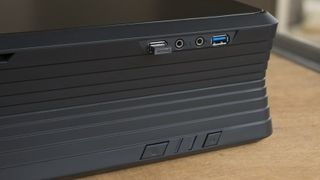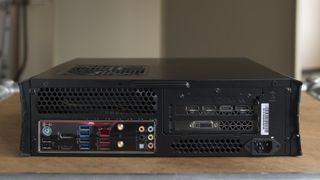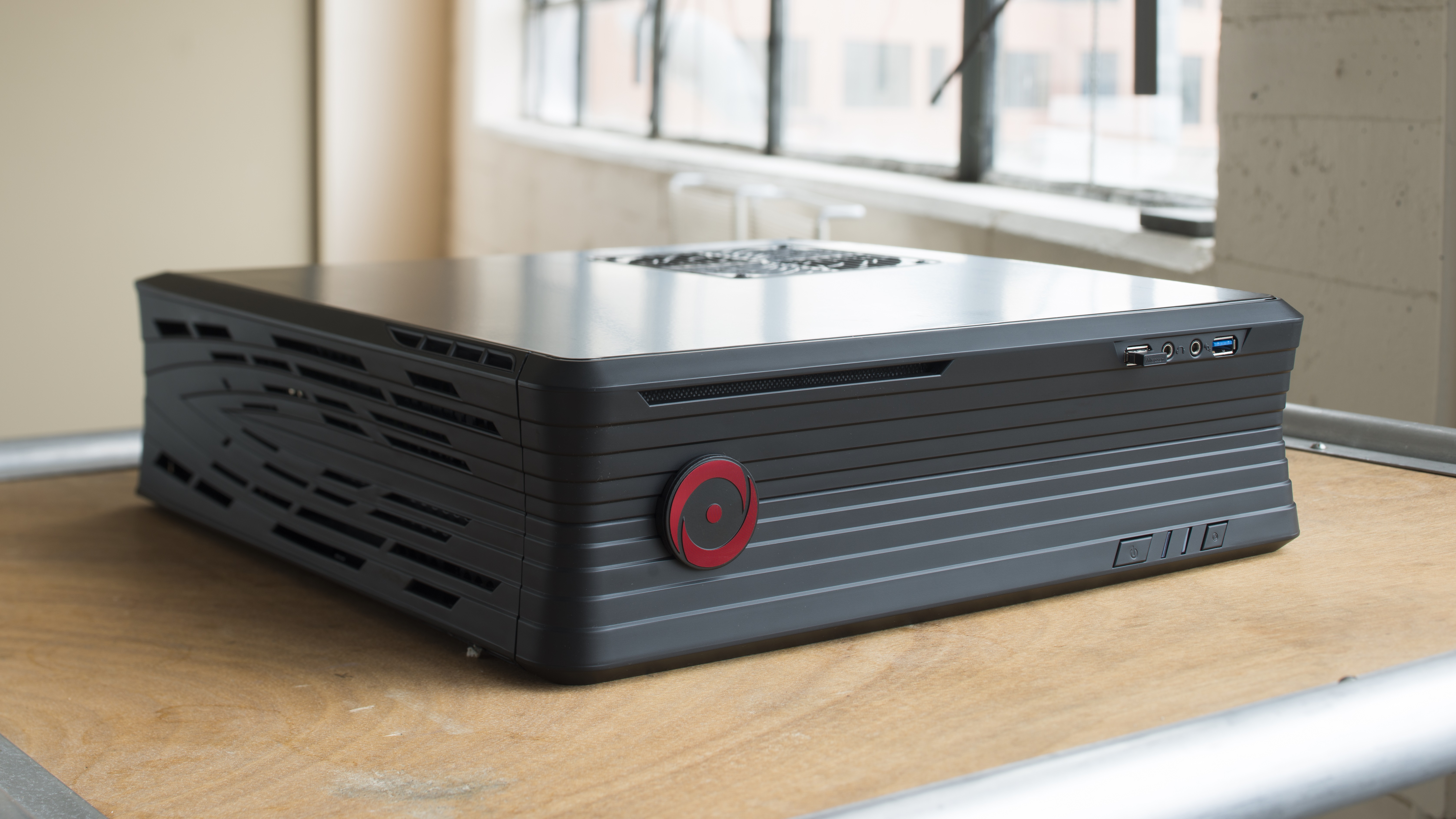TechRadar Verdict
The Origin Omega is the end-all, be-all of PC gaming in the living room. It's powerful enough to run games in Ultra-HD and offers enough storage options for an arsenal of video and audio content.
Pros
- +
Powerful HTPC
- +
Capable of 4K gaming
Cons
- -
Pricey system
- -
Almost identical to the Chronos line
Why you can trust TechRadar
The Origin Omega isn't like most other Steam Machines which, if you've never heard that term before, are defined as the initiative launched by Valve in 2013 that intended to bring more console-like PCs to the living room.
Most of the Steam Machines we've seen so far, like the Alienware Alpha and Syber Steam Machine, aren't really what I'd call high-powered gaming rigs. They play games at 1080p, come with a built-in GPU and are rather limited by some custom, proprietary parts that make customizations a real pain in the motherboard.
The Omega is different in the sense that it brings true power to the living room. This monster is capable of delivering 4K, 60 frames-per-second (fps) gameplay from inside your entertainment center.
Now, to deliver that kind of power, the Omega couldn't be a dainty, little black box. No, Origin's mighty foray into the world of home theater PCs (HTPCs) is a fairly sizeable, power-guzzling beast, pure and simple.
And though it looks similar to the Origin Chronos Z, with which it shares an external chassis, it's a quieter machine overall with nary a noise and only a few of the same nagging issues.

Design
Identical in design to the Chronos Z, the Omega can be customized in four "standard" PC cases, and two HTPC cases: the Silverstone GD09 and GD05. The four standard cases include the squat Corsair 250D; sleek Silverstone RVZ01; average-sized Corsair 350D; and trash bin-shaped Silverstone FT03.
Opting for the one of the two HTPC cases means your new rig will look more akin to an A/V receiver than a standard, upright tower and come with four padded feet that keep the case from getting scratched.
The Origin Omega sent to techradar for review came housed in a Silverstone RVZ01 case. It's not the most upgradeable of the lot – if you're planning on modding the system down the road, the RVZ01 isn't a good case choice – but the vertical gray slits that perforate the top and bottom of the box are too appealing to resist.
Should you make this a living room PC, I'd instead encourage you to give the GD09 and GD05 a closer look. The GD09 supports three-way SLI (Nvidia) and Crossfire (AMD), while the GD05 has a pretty sweet, brushed aluminum face that should look good on almost any shelf near your TV.
Origin can also paint the exterior of your chassis for around $300 (about £180, AU$350). Solid color options include red, white, pink and gray or, for the same price, one of three metallic colors: blue, green or yellow.
Most chassis sport a CD/DVD/Blu-ray drive on the front, two USB 3.0 ports and headphone and microphone jacks. However, not all of the options will come with an optical drive, so keep an eye out if that matters to you.
Popping the system open is done by breaking out a screwdriver and unfastening two screws in the back of the case. Inside, you'll find either a 120mm liquid-cooler or standard fan, depending on how much you decide to pony up for your new system.

You'll find the motherboard in an accessible location for most of the cases listed above. However, getting to the graphics card and other PCI-E slots can be a bit headache – often requiring you to remove more screws and more of the frame to change things around.
Admittedly, it's tough for any case to offer a reasonable size, enough room for airflow and easily accessible parts all in the same build. So, two out of the three isn't bad.
Chronos? Omega? It's all Greek to me...
My biggest bugbear with the Omega is that, in many ways, it feels like a cash-in on the Steam Machine movement rather than a system built from the ground up with the living room in mind.
The major differences between the Omega and Chronos that I spotted when customizing the former were the Omega's aforementioned HTPC chassis and the option to select an X99 chipset when building a Chronos system. The Omega is limited to just the more recent Z170.
That means you won't find Intel Haswell-E CPUs on an Omega, a serious bummer if you wanted the absolute fastest machine. That said, thanks to its Z170 chipset option, which supports Intel Skylake chips, you'll have plenty of powerful options when it comes time to select a motherboard.
But, once you get past the chipset, it's amazing how similar the two systems are.
If it seems strange to take issue with a way a product is marketed or seems to have been conceived, but two nearly identical systems existing just obfuscates the buying process and seems to be little more than capitalizing on a trend.
Nick Pino is Managing Editor, TV and AV for TechRadar's sister site, Tom's Guide. Previously, he was the Senior Editor of Home Entertainment at TechRadar, covering TVs, headphones, speakers, video games, VR and streaming devices. He's also written for GamesRadar+, Official Xbox Magazine, PC Gamer and other outlets over the last decade, and he has a degree in computer science he's not using if anyone wants it.

